Introduction
Introduction on how To Cook Tofu. Tofu, also known as bean curd, is a versatile and nutritious food made from soybeans. It has been a key ingredient in Asian cooking for hundreds of years and is now loved worldwide for its high protein content and ability to fit into many dishes.
Origins and History

Tofu started in China over 2,000 years ago during the Han Dynasty. According to a story, a Chinese prince discovered how to make tofu by accident when he added a coagulant to soy milk. This method then spread throughout East Asia, becoming a staple in Chinese, Japanese, Korean, and Southeast Asian cuisines.
Production Process of How To Cook Tofu
Making tofu begins with soaking soybeans, which are then ground and boiled to produce soy milk. A coagulant, like calcium sulfate or magnesium chloride, is added to the soy milk to make it curdle. The curds are then pressed into solid blocks. Depending on how much water is removed, tofu can be soft and silky or firm and dense, each type used for different kinds of dishes.
Nutritional Benefits
Tofu is known for its health benefits. It is a great source of high-quality protein, making it an important meat substitute for vegetarians and vegans. It is also rich in essential amino acids, calcium, iron, and other minerals. Tofu is low in calories and free of cholesterol, which supports heart health and provides a good amount of dietary fiber.
Culinary Uses
Tofu’s neutral flavor allows it to take on the taste of the ingredients it is cooked with, making it very adaptable. It can be marinated, baked, fried, blended, or eaten raw. In Asian cuisines, it is often used in soups, stews, stir-fries, and salads. In Western cooking, tofu is increasingly popular in plant-based dishes, such as tofu scramble, vegan burgers, and dairy-free desserts.
Tofu is more than just a meat substitute; it is a nutritious and flexible ingredient with a rich history and many culinary uses. Whether you are exploring vegetarian cooking or just looking to add more plant-based foods to your diet, tofu offers many options for delicious and healthy meals.
Essential Equipment
- Cutting Board: For cutting and prepping tofu.
- Knife: A sharp knife for slicing or cubing tofu.
- Tofu Press: To remove excess moisture from firm or extra-firm tofu.
- Mixing Bowls: For marinating tofu and mixing ingredients.
- Non-Stick Skillet or Frying Pan: Ideal for stir-frying or frying tofu without it sticking.
- Baking Sheet: For baking tofu; use parchment paper for easy cleanup.
- Oven: For baking or roasting tofu.
- Grill Pan or Outdoor Grill: For grilling tofu to achieve a smoky flavor.
- Spatula: For flipping and stirring tofu while cooking.
- Measuring Cups and Spoons: For measuring marinades and seasonings.
Optional Equipment:
- Food Processor: For blending silken tofu into smoothies or sauces.
- Steamer Basket: For steaming tofu, which can help retain moisture.
- Wok: Great for stir-frying tofu with vegetables.
- Blender: For making creamy sauces or soups using silken tofu.
- Cast Iron Skillet: For achieving a nice sear on tofu.
Health Benefits of Tofu
Tofu, a nutritious and versatile food made from soybeans, offers many health benefits. It’s a great addition to various diets, especially for vegetarians and vegans.
High-Quality Protein Source
Tofu is a fantastic source of high-quality protein. It contains all nine essential amino acids that the body needs but cannot produce on its own. This makes it a complete protein, important for muscle repair, growth, and overall health. A 100-gram serving of tofu provides around 8 grams of protein, making it an excellent meat substitute for those wanting to reduce or eliminate animal products from their diet.
Rich in Essential Nutrients
Tofu is packed with important vitamins and minerals, including:
- Calcium: Essential for bone health, muscle function, and nerve signaling. Calcium-fortified tofu can provide up to 20% of the recommended daily intake per serving.
- Iron: Important for making hemoglobin, which carries oxygen in the blood. Tofu offers a good amount of non-heme iron, which comes from plants.
- Magnesium: Crucial for over 300 biochemical reactions in the body, including energy production and muscle function.
- Phosphorus: Needed for strong bones and teeth.
- B Vitamins: Important for energy production and maintaining a healthy nervous system.
Low in Calories and Fat
Tofu is low in calories and contains healthy fats. A 100-gram serving of tofu has about 70 calories and 4 grams of fat, including omega-3 and omega-6 fatty acids. These healthy fats help reduce inflammation and support heart health.
Heart Health
Eating tofu can be good for your heart. Soy protein, which tofu is rich in, has been shown to reduce levels of LDL cholesterol (the “bad” cholesterol) and increase levels of HDL cholesterol (the “good” cholesterol). This helps lower the risk of heart disease. Additionally, tofu’s low saturated fat content and lack of cholesterol contribute to a heart-healthy diet.
Supports Weight Management
Tofu is a low-calorie, high-protein food that can help with weight management. Protein-rich foods make you feel full longer, reducing overall calorie intake. Adding tofu to your meals can help you maintain a healthy weight or achieve weight loss goals.
Bone Health
The high calcium and magnesium content in tofu supports bone health and can help prevent conditions like osteoporosis. Regularly eating calcium-rich foods like tofu is essential for maintaining strong bones and reducing the risk of fractures.
Antioxidant Properties
Tofu contains various antioxidants, including isoflavones, which have anti-inflammatory and anti-cancer properties. Isoflavones can help neutralize free radicals, reducing oxidative stress and lowering the risk of chronic diseases such as cancer and heart disease.
Hormonal Balance
The isoflavones in tofu are phytoestrogens, which can mimic estrogen in the body. This can be particularly beneficial for women during menopause, as it may help reduce symptoms such as hot flashes and support overall hormonal balance.
Digestive Health
Tofu is a good source of dietary fiber, which aids in digestion and promotes a healthy gut. Fiber helps regulate bowel movements, prevent constipation, and maintain a healthy digestive tract.
Versatility in Diets
Tofu is gluten-free and suitable for people with gluten sensitivities or celiac disease. It is also a versatile ingredient that can be included in various diets, including vegetarian, vegan, and low-carb diets, making it accessible for people with different dietary preferences and restrictions.
Tofu is a nutritious and flexible food with many health benefits. Whether you are looking to improve your diet or explore plant-based options, tofu is a great choice for promoting good health.
Types of Tofu
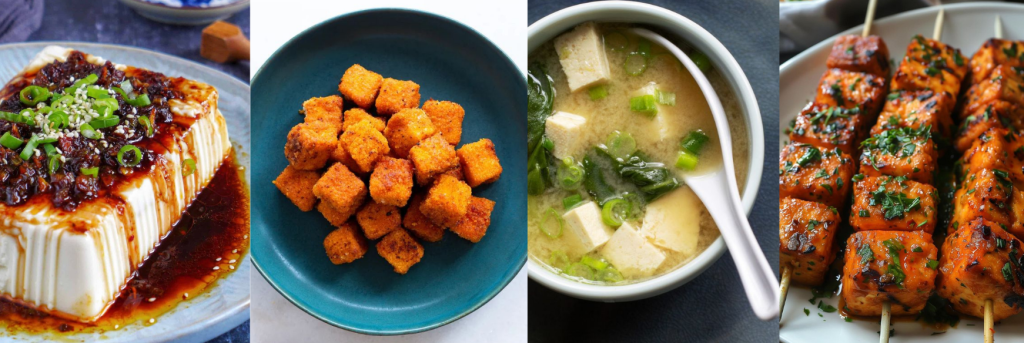
- Silken Tofu: This type is the softest, with the most water content, giving it a smooth, custard-like texture. It’s often used in soups, smoothies, desserts, and dressings.
- Soft Tofu: Slightly firmer than silken tofu, it still has a smooth texture and is commonly used in soups and braised dishes.
- Firm Tofu: This type holds its shape well and is versatile for stir-frying, grilling, and baking. It absorbs flavors well, making it popular in savory dishes.
- Extra-Firm Tofu: This is the densest type with the least water content. It can be cubed, sliced, or crumbled for various dishes and is ideal for grilling, frying, and stir-fries.
How To Bake Tofu
- Press the tofu for at least 30 minutes to make it extra firm. Then, cut the tofu into cubes or slabs and place them in a glass dish.
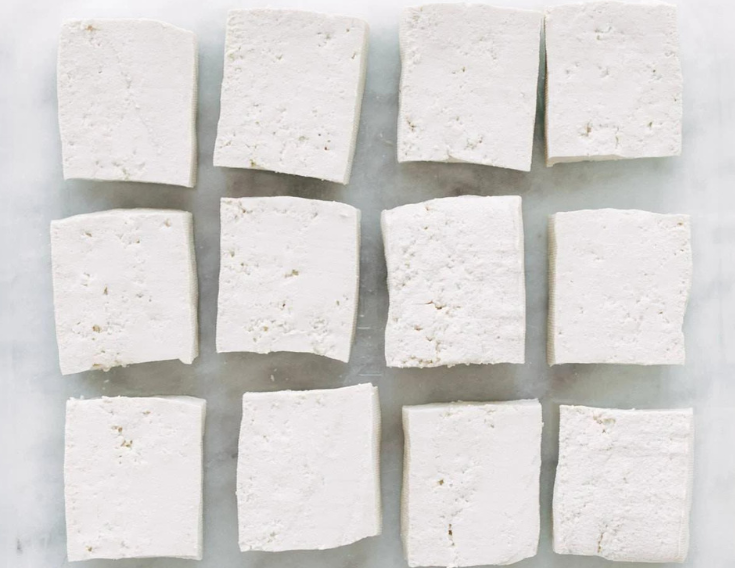
- Pour a sauce or marinade over the tofu. Marinades made with oil or soy sauce work really well.
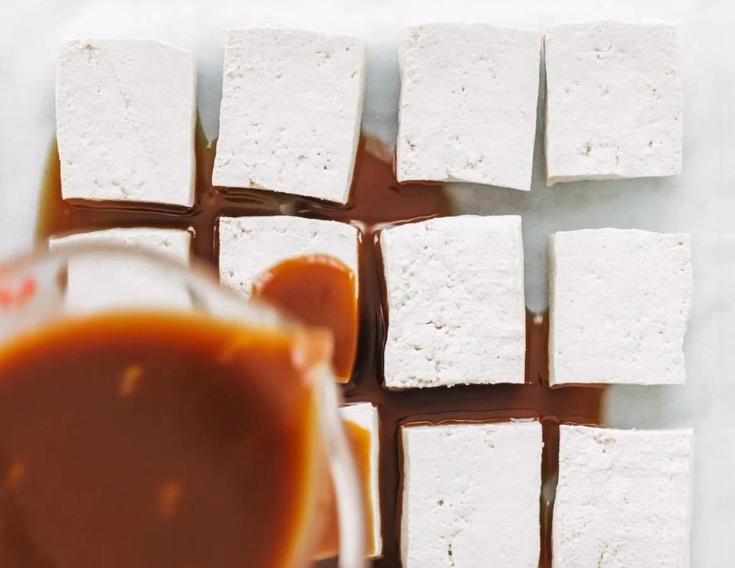
- Put a lid on the container and let the tofu soak in the marinade for around 30 minutes.

- Place the tofu on a baking sheet lined with parchment paper. Bake at 400°F for 35-40 minutes, flipping the tofu halfway through. You can save the marinade and brush it onto the tofu while it bakes for extra flavor.
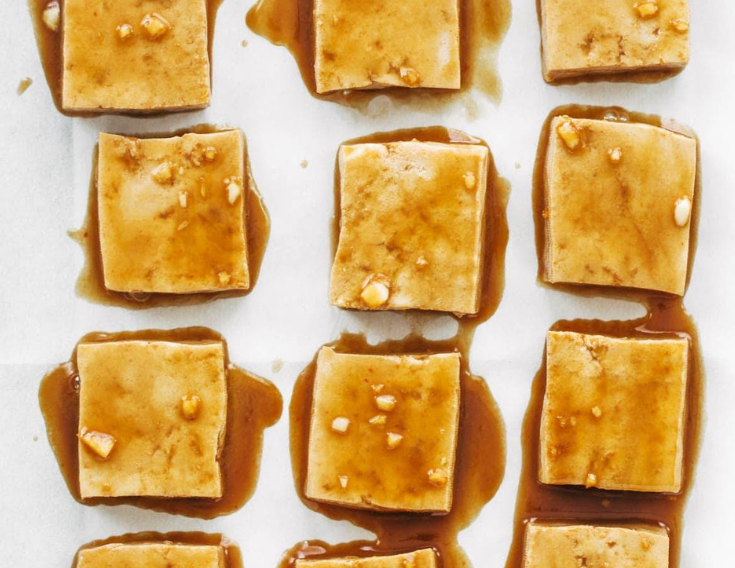
- Baked tofu can be eaten as a main meal or put in noodle bowls, rice bowls, or salads.

How To Bake Crispy Tofu
- Press the tofu firmly for at least 30 minutes. Then cut the tofu into cubes.
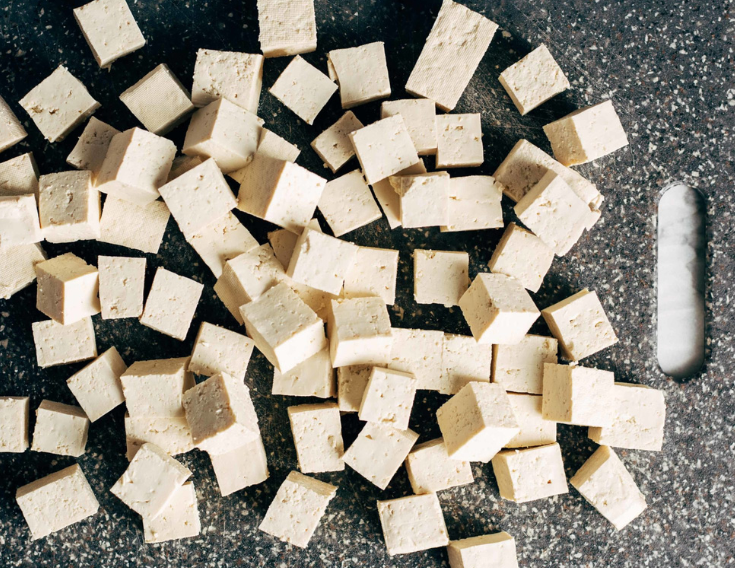
- Put the cubes in a bowl, and gently mix them with 1-2 tablespoons of cornstarch.
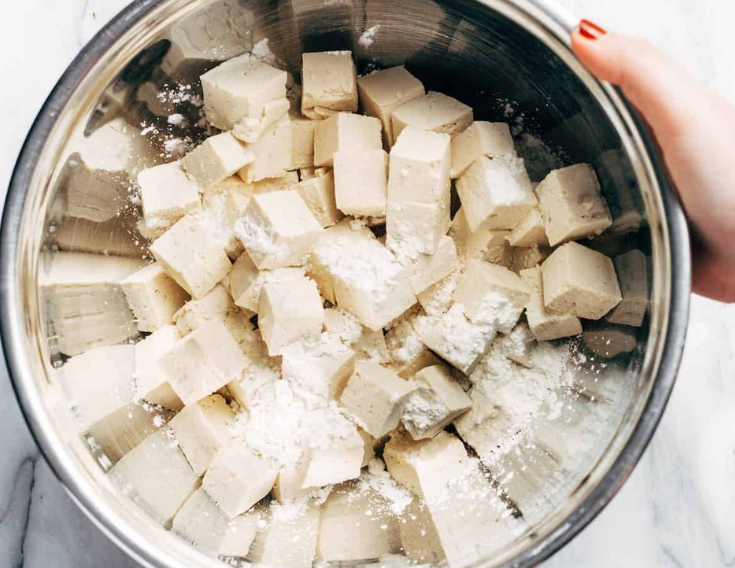
- Place the tofu on a baking sheet lined with parchment paper. Then, sprinkle some olive oil and salt on top.
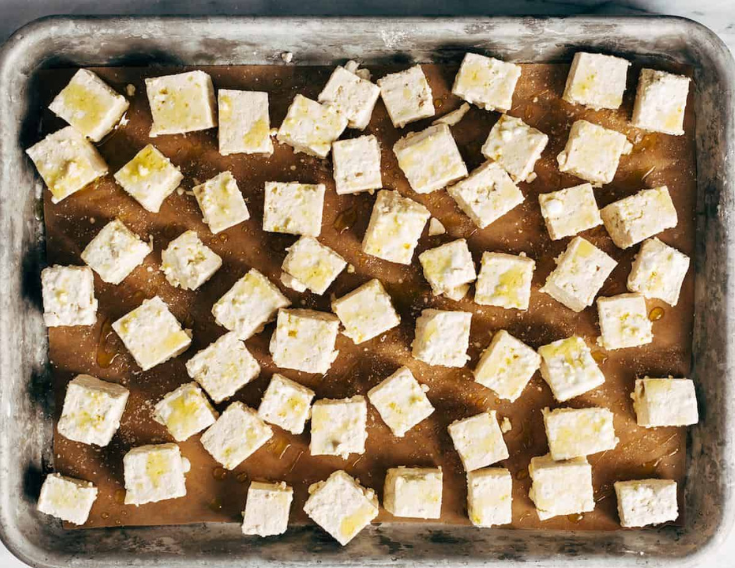
- Cook in the oven at 425 degrees for 25 minutes, or until it gets as crispy as you want.
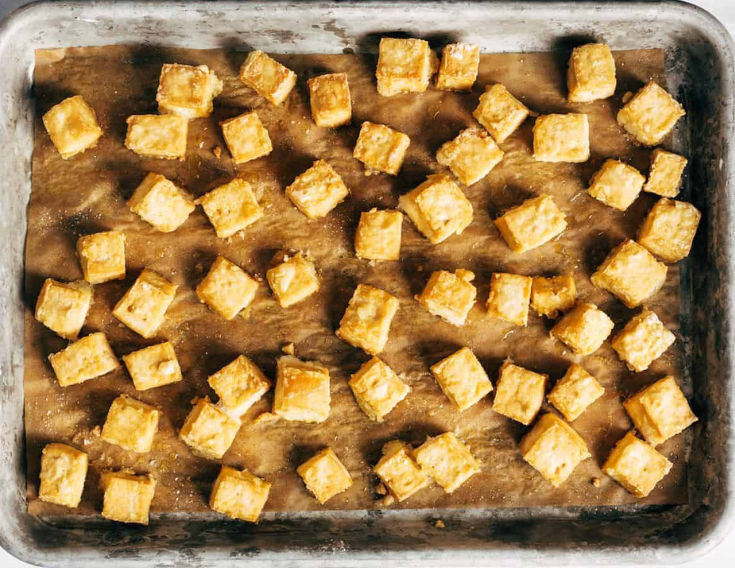
- Put it in your favorite bowl, stir fry it, or mix it with a sauce and enjoy it as a starter!
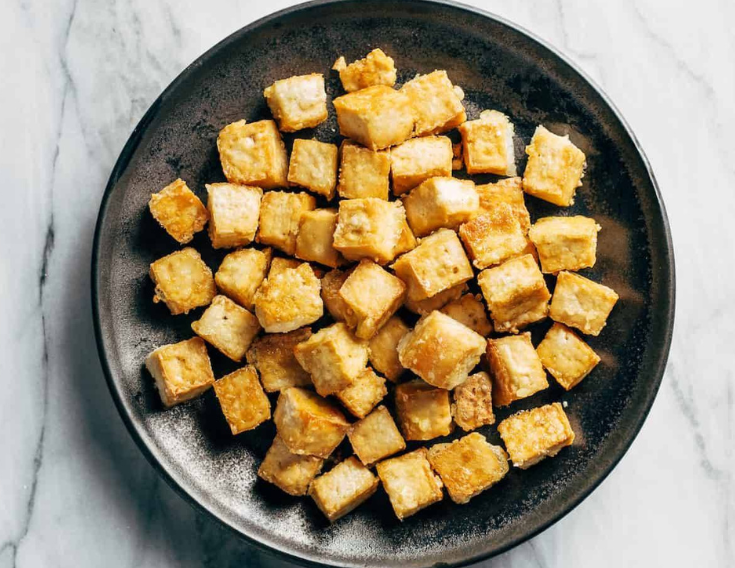
How To Air Fry Tofu
- Mix up your sauce. Take 2.5 tablespoons of cornstarch, 2.5 tablespoons of nutritional yeast, 2 tablespoons of soy sauce, and 2 tablespoons of oil. Add a little bit of all-purpose spice mix. That’s it! You’ve got your batter.
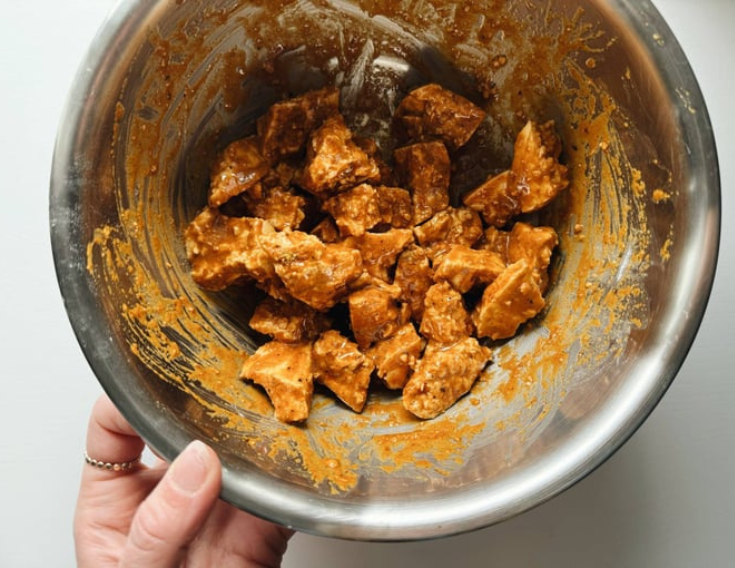
- Tear the tofu into pieces and put it in. I like tearing the tofu because the uneven edges help the batter stick better. So, just tear, add it in, and gently stir to coat the pieces.
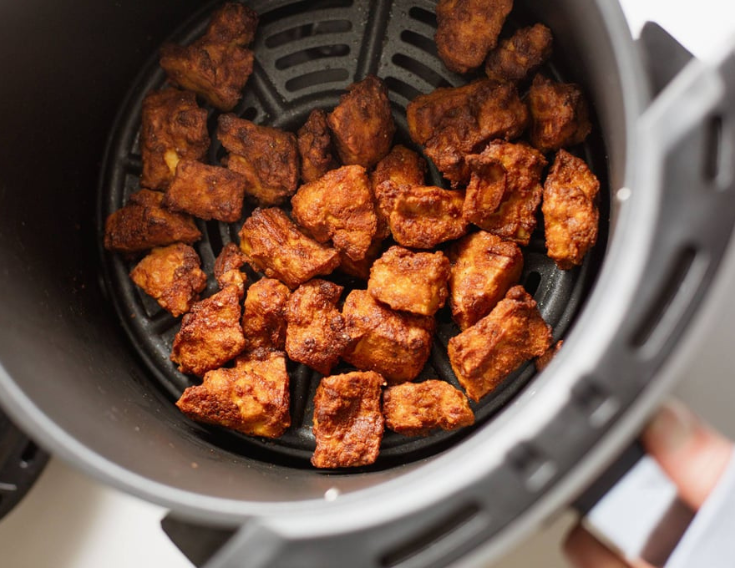
How To Sauté Tofu
- Press extra firm tofu for 30 minutes to remove excess moisture and cut it into cubes. Heat a small amount of oil in a non-stick skillet over medium-high heat. Add the tofu cubes to the pan and cook them, turning occasionally, until they are brown on all sides. This should take about 15 minutes.
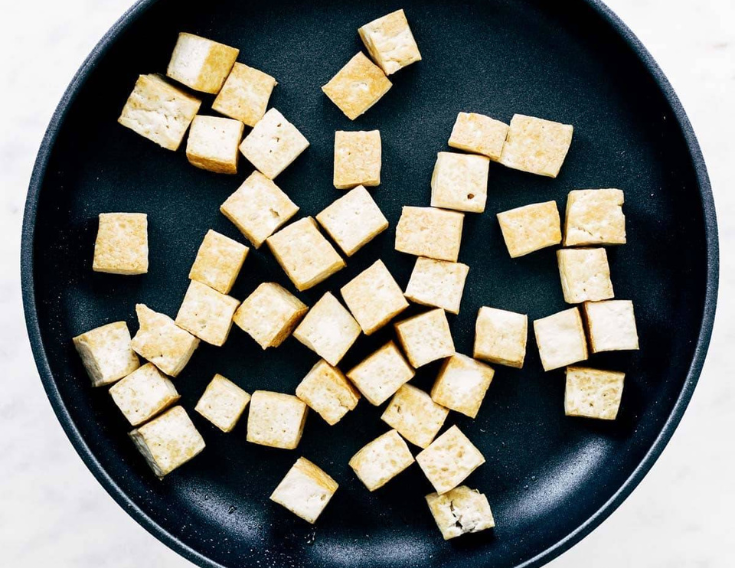
- When all the sides of the tofu are a light golden brown, pour about 1/4 cup of sauce over it.
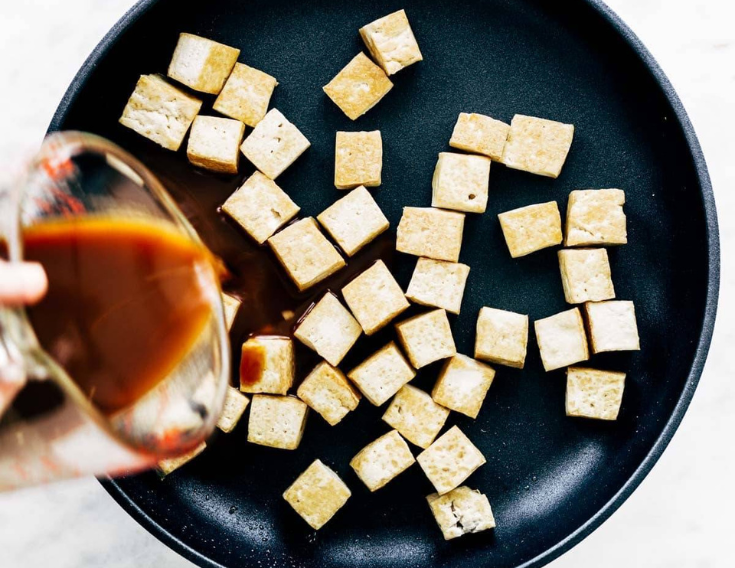
- Cook the tofu, stirring often, until the sauce soaks into it and the edges become crispy and caramelized.
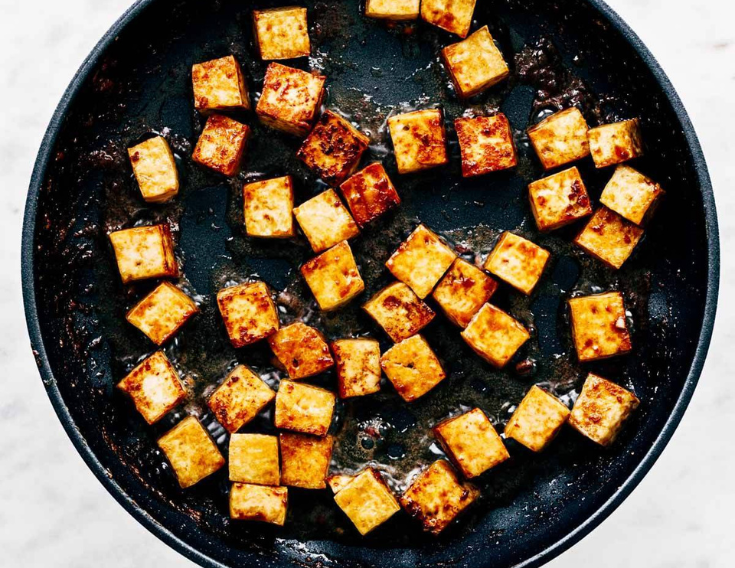
- Add sautéed tofu to your salads, stir-fries, noodle bowls, or soups.
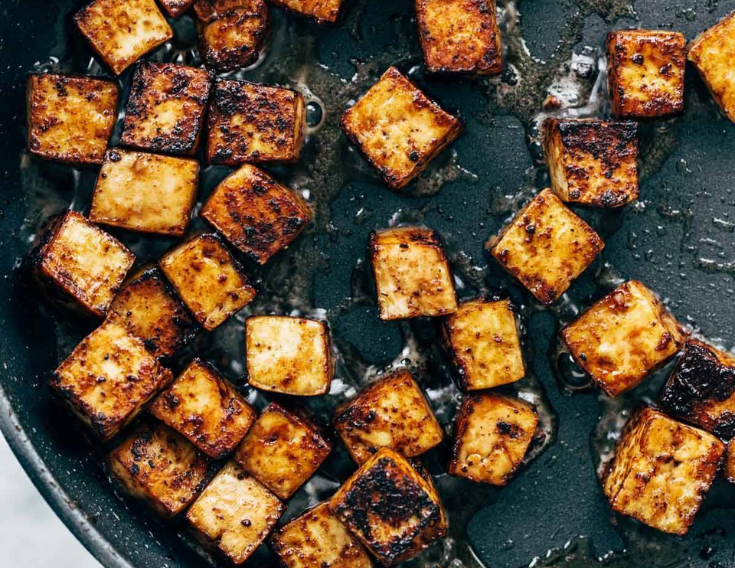
How To Fry Tofu
- Press extra firm tofu for 30 minutes and cut it into triangles. Heat a few tablespoons of oil in a pan over medium-high heat. Add the tofu pieces to the pan in a single layer. Don’t overcrowd the pan. Let the tofu cook for about 4-5 minutes without stirring, until the bottom is golden brown and crispy

- Flip the tofu pieces over and sprinkle salt on the side that’s cooked. Let the other side cook for another 4 minutes until it turns golden brown and crispy. Take the tofu out of the pan and place it on a paper towel to drain. Sprinkle salt on the other side as well.

How To Scramble Tofu
- Heat about 1 tablespoon of oil in a nonstick or cast iron skillet over medium-high heat. Add the pressed and sliced tofu to the pan. Use a wooden spoon or spatula to break the tofu into small pieces, like scrambling eggs.
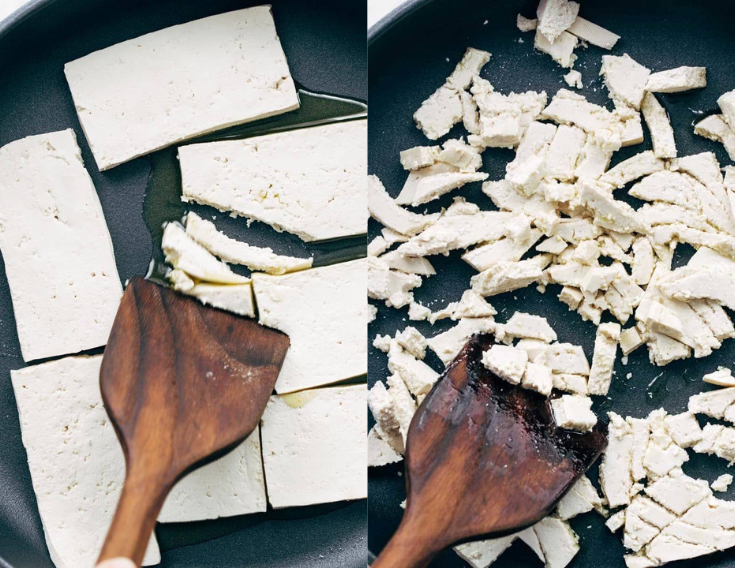
- After you scramble the tofu, pour in some sauce or seasoning. Cook it for about 3-4 minutes, stirring until the tofu is well covered and has soaked up the flavor.
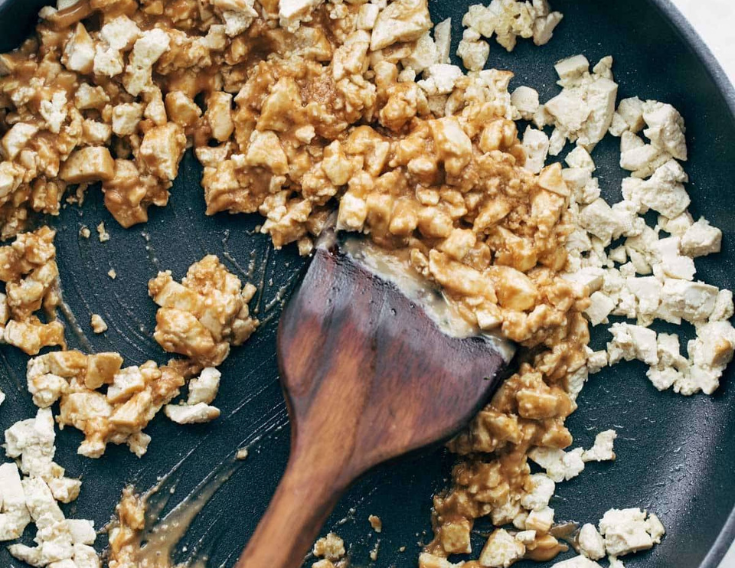
- Let the tofu cook without stirring for about 4 minutes. This makes it crispy. Then, give it a quick stir to move it around. Cook for another 3-4 minutes, or until it’s as crispy as you want. The more you let it cook without touching it, the crispier it will become.
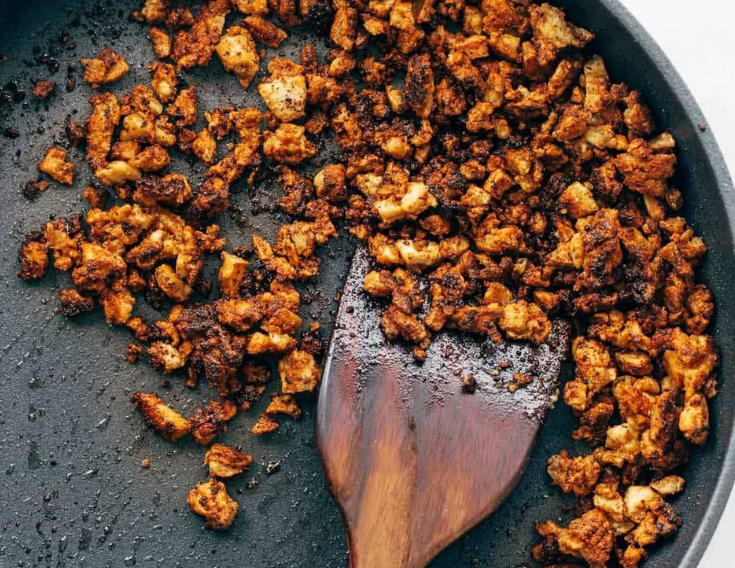
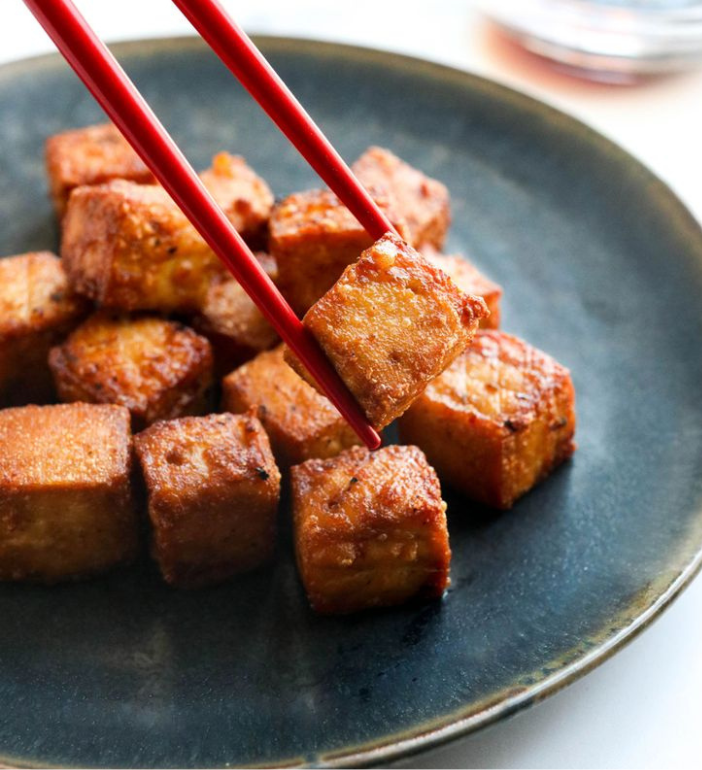
How To Cook Tofu
Note
Preparation Tips
- Pressing: Remove excess moisture by pressing firm or extra-firm tofu before cooking. This helps it absorb flavors better.
- Marinating: Tofu absorbs flavors well, so marinate it for at least 30 minutes before cooking for enhanced taste.
- Cutting: Cut tofu into cubes, slices, or crumbles depending on your recipe.
Cooking Techniques
- Stir-Frying: Cook tofu in a hot pan with oil until golden brown for a crispy texture.
- Baking: Marinate and bake tofu at 400°F (200°C) for 25-30 minutes, flipping halfway through.
- Grilling: Use firm or extra-firm tofu; brush with oil and grill for 5-7 minutes on each side.
- Scrambling: Crumble soft or silken tofu and sauté with vegetables and spices for a vegan scramble.
Flavoring
- Use soy sauce, sesame oil, garlic, ginger, and chili for added flavor.
- Experiment with different spices and sauces to suit your dish.
Storage
- Store unused tofu in water in an airtight container in the refrigerator. Change the water daily for freshness.
- Tofu can also be frozen to change its texture; thaw and press before cooking.


